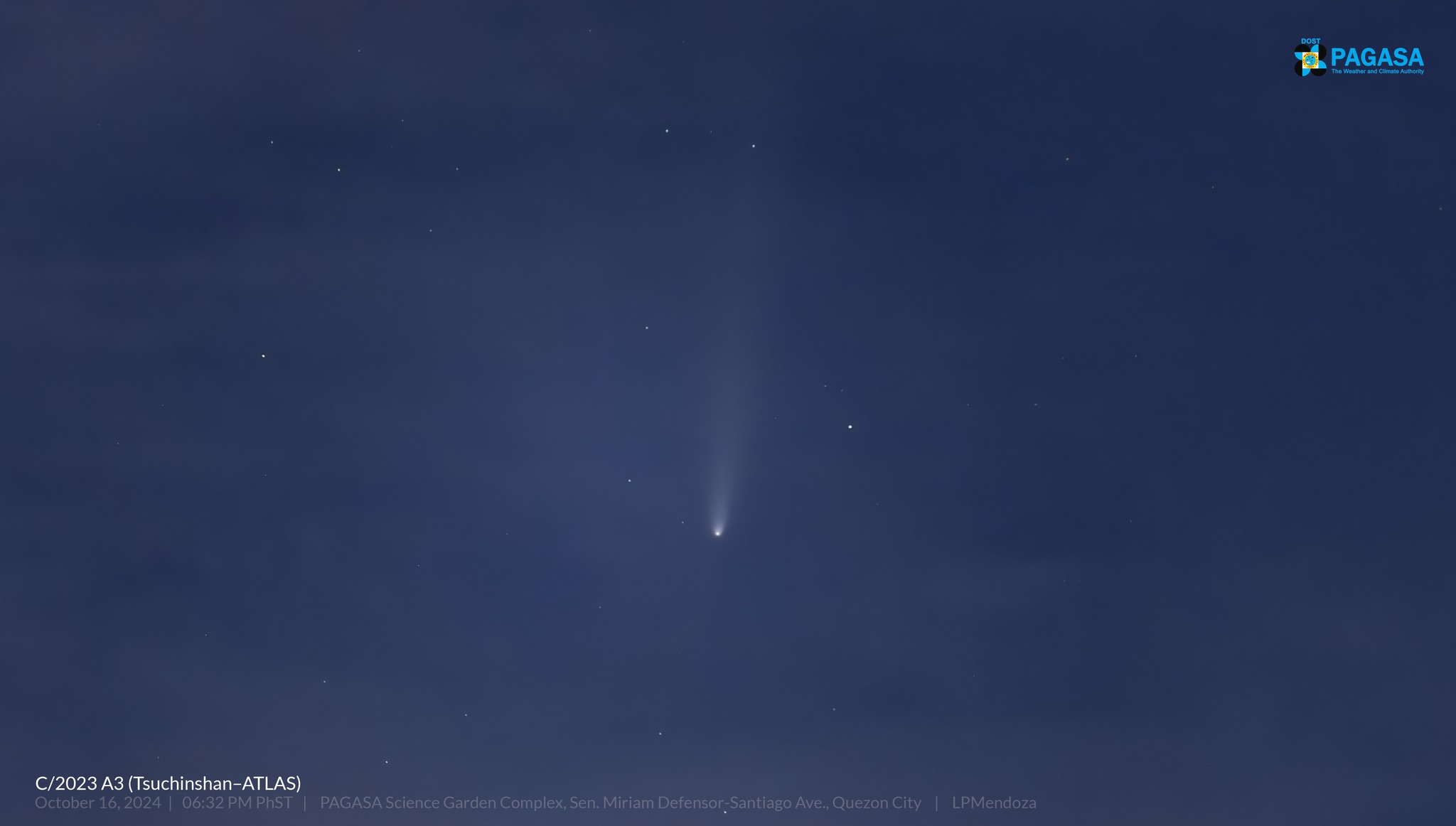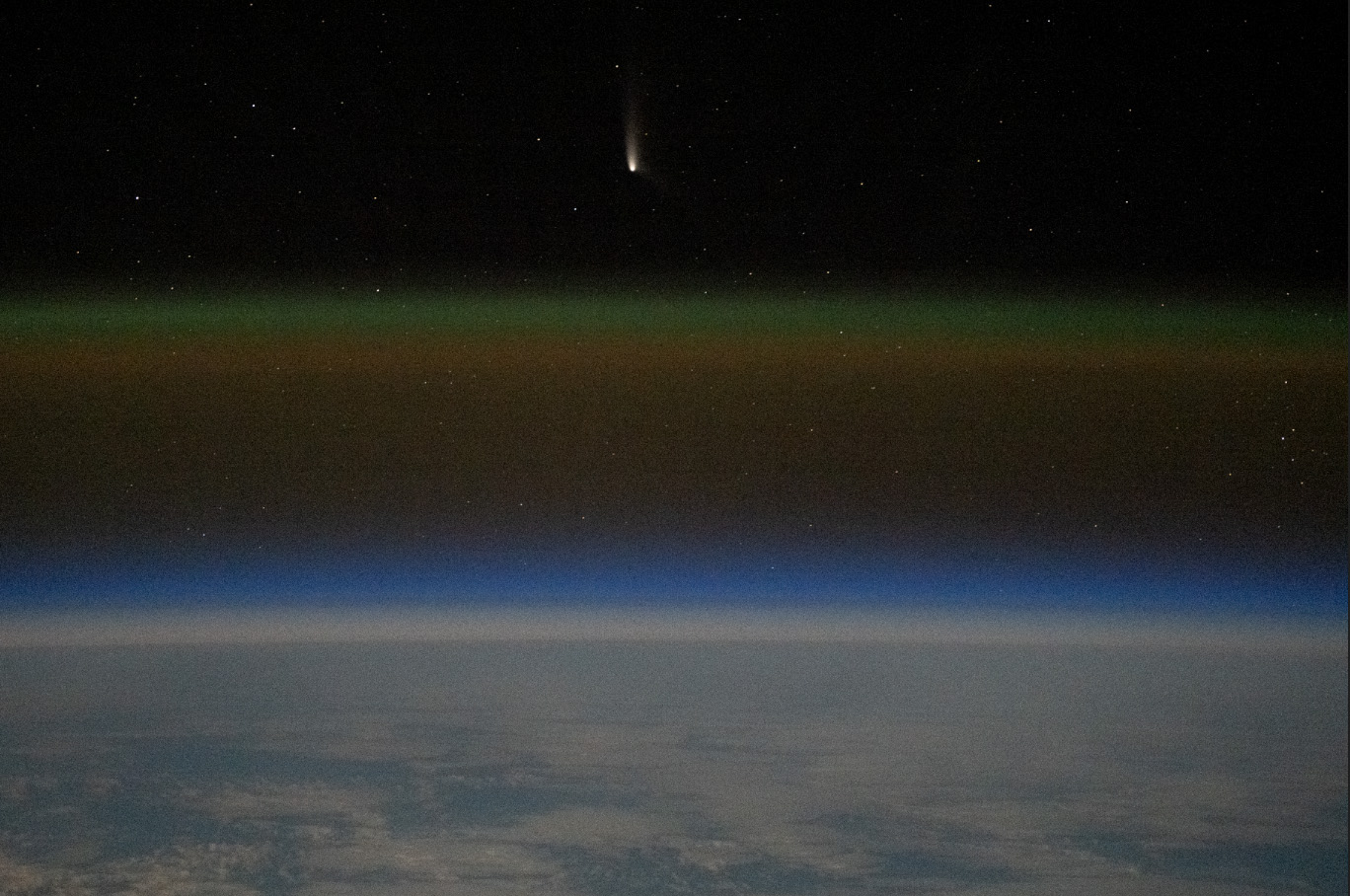
By Brian Campued
Heads up, astrophiles! Don’t forget this rare opportunity to look up at the night sky to witness the Tsuchinshan–ATLAS comet as it passes through the Earth this week.
According to the Philippine Atmospheric, Geophysical and Astronomical Services Administration (PAGASA), Tsuchinshan–ATLAS or Comet C/2023 A3 will be visible toward the western sky after sunset or around 6:30 p.m. to 7:00 p.m.
“You won’t get another chance for a long, long time. This comet won’t be back for another 80,000 years!” PAGASA said in a Facebook post Wednesday night.
The National Aeronautics and Space Administration (NASA) describes comets as frozen snowballs composed of dust, rock, and ice. These glowing space voyagers get their prominent fireball and tail appearance as they orbit closer to the sun, causing their heads to heat up and their bodies to stretch millions of miles away from the sun.

Meaning “Purple Mountain”, the Tsuchinshan–ATLAS comet shares its namesake with a Chinese observatory and the Asteroid Terrestrial-impact Last Alert System (ATLAS) telescope in South Africa which first detected the celestial body last year.
Meanwhile, NASA said the comet will be most visible to the naked eye until Oct. 24.
So, if you’re going comet hunting tonight, make sure to choose a dark vantage point with a clear view of the horizon and away from artificial sources of light. Enjoy the view, skywatchers!
—iro
